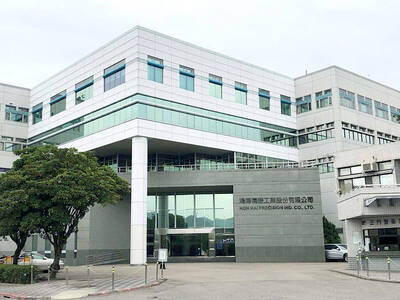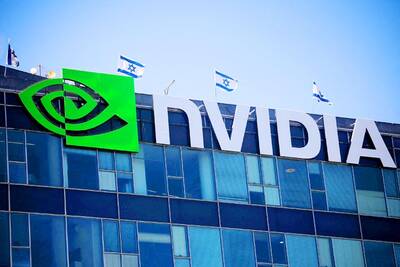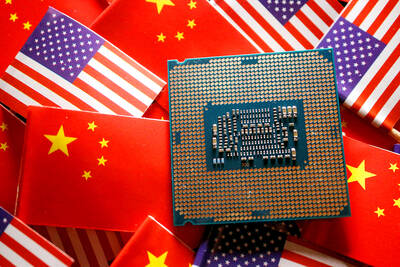CTBC Bank (中國信託銀行), Cathay United Bank (國泰世華銀行), Taipei Fubon Bank (台北富邦銀行), Mega International Commercial Bank (兆豐銀行) and Taiwan Cooperative Bank (合庫銀行) are categorized as “domestic systemically important banks (D-SIB)” and are therefore subject to higher capital standards, the Financial Supervisory Commission (FSC) announced on Thursday last week.
These D-SIBs would also be subject to tighter supervision and new rules, as their failure would cause significant disruption to the nation’s banking system and the overall economy, FSC Chairman Wellington Koo (顧立雄) told a news conference.
The commission would require these banks to maintain a minimum common equity tier-1 ratio of 11 percent, a minimum tier-1 capital ratio of 12.5 percent and no less than 14.5 percent in total capital adequacy ratio, Koo said.
The new capital cushion standards are 4 percentage points higher than those for regular banks, he said, adding that the five banks would have four years to increase their capital to meet the new standards.
Overall, banks in Taiwan reported an average common equity tier-1 ratio of 11.37 percent, tier-1 capital ratio of 12.04 percent and total capital adequacy ratio of 14.14 percent, Banking Bureau data showed.
The commission formed a task force two years ago to set the criteria for identifying D-SIBs to limit potential contagion risks in times of crisis.
The five banks were selected based on their market capitalization, their interconnection with peers, their substitutability by peers in terms of functions and services, as well as the complexity of their operations, which are in line with the standards set by the Basel Committee on Banking Supervision, Koo said.
“Being a D-SIB is honorable, but also means more responsibility. There is an advantage, as they will have privileges when applying to launch new business or products,” Koo said.
However, he rejected the idea that the D-SIBs are “too big to fail,” saying that every bank matters, given that they all have a similar shares of the Taiwan market.
Among the five banks, only CTBC has met the new standards, while Cathay United, Taipei Fubon and Mega do not meet one or two ratios and Taiwan Cooperative does not meet any, the Banking Bureau data showed.
The commission said it plans to review and update its D-SIB designations annually.

Shares in Taiwan closed at a new high yesterday, the first trading day of the new year, as contract chipmaker Taiwan Semiconductor Manufacturing Co (TSMC, 台積電) continued to break records amid an artificial intelligence (AI) boom, dealers said. The TAIEX closed up 386.21 points, or 1.33 percent, at 29,349.81, with turnover totaling NT$648.844 billion (US$20.65 billion). “Judging from a stronger Taiwan dollar against the US dollar, I think foreign institutional investors returned from the holidays and brought funds into the local market,” Concord Securities Co (康和證券) analyst Kerry Huang (黃志祺) said. “Foreign investors just rebuilt their positions with TSMC as their top target,

REVENUE PERFORMANCE: Cloud and network products, and electronic components saw strong increases, while smart consumer electronics and computing products fell Hon Hai Precision Industry Co (鴻海精密) yesterday posted 26.51 percent quarterly growth in revenue for last quarter to NT$2.6 trillion (US$82.44 billion), the strongest on record for the period and above expectations, but the company forecast a slight revenue dip this quarter due to seasonal factors. On an annual basis, revenue last quarter grew 22.07 percent, the company said. Analysts on average estimated about NT$2.4 trillion increase. Hon Hai, which assembles servers for Nvidia Corp and iPhones for Apple Inc, is expanding its capacity in the US, adding artificial intelligence (AI) server production in Wisconsin and Texas, where it operates established campuses. This

H200 CHIPS: A source said that Nvidia has asked the Taiwanese company to begin production of additional chips and work is expected to start in the second quarter Nvidia Corp is scrambling to meet demand for its H200 artificial intelligence (AI) chips from Chinese technology companies and has approached contract manufacturer Taiwan Semiconductor Manufacturing Co (TSMC, 台積電) to ramp up production, sources said. Chinese technology companies have placed orders for more than 2 million H200 chips for this year, while Nvidia holds just 700,000 units in stock, two of the people said. The exact additional volume Nvidia intends to order from TSMC remains unclear, they said. A third source said that Nvidia has asked TSMC to begin production of the additional chips and work is expected to start in the second

US President Donald Trump on Friday blocked US photonics firm HieFo Corp’s US$3 million acquisition of assets in New Jersey-based aerospace and defense specialist Emcore Corp, citing national security and China-related concerns. In an order released by the White House, Trump said HieFo was “controlled by a citizen of the People’s Republic of China” and that its 2024 acquisition of Emcore’s businesses led the US president to believe that it might “take action that threatens to impair the national security of the United States.” The order did not name the person or detail Trump’s concerns. “The Transaction is hereby prohibited,”